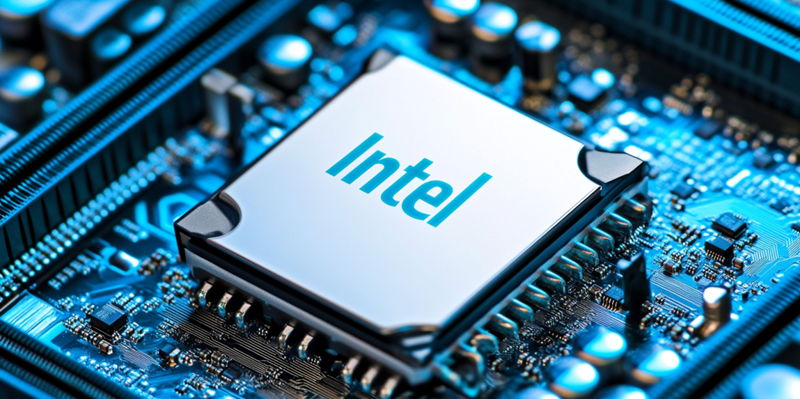Intel has recently filed a groundbreaking patent for a "disaggregated GPU" design, signaling a significant shift from traditional monolithic GPU architectures to a more segmented and specialized chiplet approach. This innovative method involves dividing GPUs into smaller, focused chiplets that are interconnected using advanced technology. The numerous benefits of this new GPU design include improved power efficiency through the power-gating of unused chiplets, increased workload customization, and enhanced modularity and flexibility in GPU construction.
Implications of Disaggregated GPU Architecture
Power Efficiency and Customization
The new disaggregated GPU model introduced by Intel paves the way for a future where GPUs can be meticulously optimized for specific tasks, whether they be related to graphics, computational processes, or artificial intelligence. By configuring the chiplets to power down when not in use, Intel’s design offers a marked improvement in power efficiency, which is a key consideration in modern computing environments. This advancement means that GPUs can be employed more effectively, as resources will not be wasted on inactive components, thereby extending the lifespan of hardware and reducing energy consumption.
In addition to its power-saving features, the disaggregated GPU design allows for unprecedented levels of workload customization. Each chiplet can be tailored for particular applications, making the GPU more adaptable to the diverse needs of various computing tasks. For example, a GPU designed for graphic-intensive work can be structured differently from one tailored for machine learning algorithms, offering a level of specialization that was not possible with monolithic GPU designs. This potential for customization could lead to more efficient solutions in fields where specific computational tasks are critical, such as gaming, scientific research, and large-scale data analytics.
Modularity and Flexibility
The modularity and flexibility brought by disaggregated GPU architecture are substantial, enabling more dynamic and forward-compatible system designs. This modular approach allows for easier upgrades and replacements, as individual chiplets can be updated or exchanged without necessitating the overhaul of the entire GPU. This can significantly lower costs and increase the longevity of devices, making them more sustainable in the long run. Furthermore, the ability to interconnect diverse chiplets enhances the GPU’s performance potential by combining the strengths of different specialized units into a cohesive whole.
Such a flexible architecture can also foster innovation by enabling developers to experiment with various chiplet configurations to find optimal solutions for emerging technological challenges. This capability provides a fertile ground for future advancements in GPU technology, addressing the ever-growing demands for higher performance and efficiency in computational tasks. The disaggregated design’s adaptability could well be the key to unlocking new applications and improving existing ones in an increasingly data-driven world.
The Broader Industry Trend
Competition and Innovation
Intel’s patent for disaggregated GPUs isn’t occurring in a vacuum; it reflects a broader industry trend towards more specialized and efficient GPU designs. Notably, AMD has also been exploring similar territory, having earlier filed a patent focusing on Multi-Chiplet Module structures. This indicates a competitive race between the two tech giants to innovate and claim a leadership position in GPU technology. The technical and manufacturing challenges involved in realizing a multi-tile GPU are considerable, requiring sophisticated interconnect technology and precision engineering to ensure seamless operation between chiplets.
However, this competitive landscape benefits the industry as a whole. Both Intel and AMD are pushing the envelope in developing cutting-edge GPU architectures, which promises to accelerate progress and bring advanced technologies to market sooner. The race to implement effective disaggregated GPUs will likely spur even more innovation, encouraging other companies to pursue similar advancements and potentially leading to unforeseen breakthroughs in computational efficiency and performance.
Future Prospects
Intel recently filed a groundbreaking patent for a "disaggregated GPU" design, marking a significant evolution from traditional monolithic GPU architectures to a more segmented and specialized chiplet approach. This innovative method involves dividing GPUs into smaller, targeted chiplets that are connected using cutting-edge technology. The shift to this design brings numerous benefits, including improved power efficiency, as unused chiplets can be powered down, and increased workload customization. This new approach also enhances the modularity and flexibility in GPU construction, allowing for more tailored and efficient solutions. Each chiplet in this design can be optimized for specific tasks, leading to more effective performance and reduced energy consumption. This development reflects Intel’s ongoing commitment to innovation and could potentially revolutionize the GPU industry by providing more efficient, customizable, and adaptable graphics processing units to meet the varied needs of users. By leveraging these advancements, Intel aims to address the growing demand for more powerful and efficient computing solutions, positioning itself at the forefront of GPU technology.

